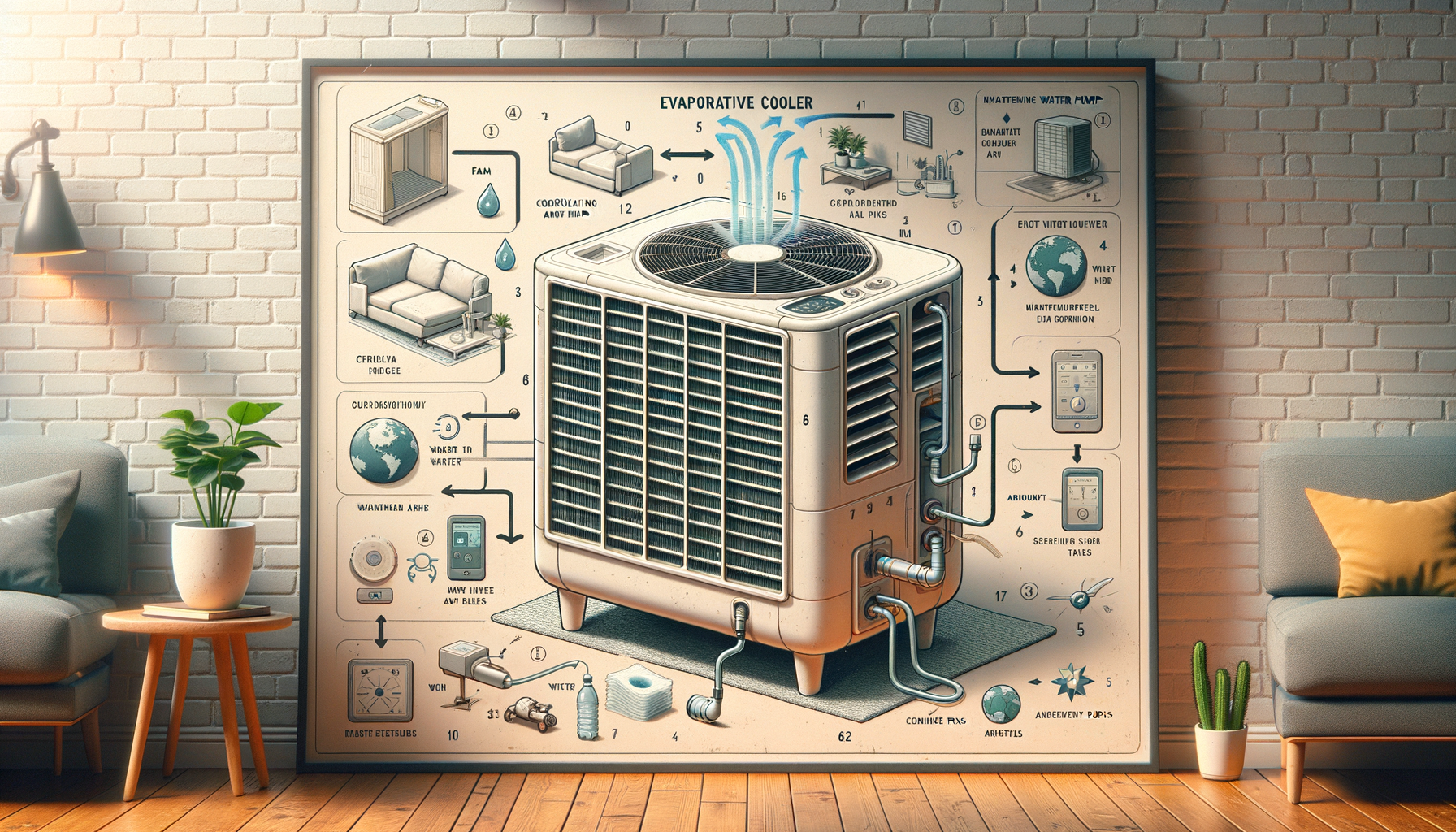“Understanding Swamp Coolers: Your Alternative Home Cooling Solution”

In the world of home cooling solutions, there’s a lesser-known contender that you may not have heard about – the swamp cooler, also known as an evaporative cooler. Although the name conjures up images of hot, humid swamps, a swamp cooler is a highly effective, energy-friendly way to keep your house comfortable, particularly in drier climates.
## What is a Swamp Cooler?
A swamp cooler, or evaporative cooler, is an environmentally friendly method for cooling a house. It plays its role by evaporation, taking in hot, dry air and morphing it into cool, moist air which is then recirculated throughout your home. Different from standard air conditioning systems that use refrigeration methods to cool the air, an evaporative cooler leverages the principle of evaporative cooling.
Utilizing a basic mechanism of soaking pads in water and then using a fan to draw air through these pads, an evaporative cooler evaporates the water into the dry air, which reduces its temperature. This colder, humidified air is then distributed to cool your living spaces. Swamp coolers are particularly cherished in arid regions where the ambient air is usually dry with low humidity levels.
## How Do Swamp Coolers Work?
Swamp coolers function based on the principles of evaporation. They have a simple makeup including a fan, a water pump, and moist pads. The unit’s fan pulls warm outdoor air into the unit where it goes through the damp pads. The water in the pads evaporates, cooling, and humidifying the air. The cooled air is then circulated throughout your house, helping to lower the overall temperature.
It’s important to note that while swamp coolers are excellent at cooling and adding humidity to dry air, they are not made to work in areas with high humidity. If the air is already saturated with moisture, the process of evaporation can’t occur, which means the cooler won’t be able to reduce the air’s temperature effectively.
## Pros and Cons of Swamp Coolers
The primary benefits of swamp coolers over standard air conditioning units are their energy efficiency and affordability. A swamp cooler consumes approximately 15 to 35 percent of the electricity used by an air conditioner. Besides, it’s also relatively cheaper to install and maintain. These reasons can present a potential saving of hundreds of dollars on energy bills and upfront costs.
Moreover, an extra feature of a swamp cooler besides pumping cool air into your home is that it adds moisture to your indoor environment. In dry carbonated areas, this added humidity can make the air more comfortable to breathe. Plus, it’s also an eco-friendly cooling option that doesn’t depend on chemical refrigerants and doesn’t contribute as much to carbon emissions.
However, as beneficial as it might be, the swamp cooler does have limitations. Its efficiency drops significantly in areas with high humidity. It’s also important to maintain your swamp cooler to prevent it from becoming a breeding ground for mold and mildew due to the constant presence of water. Lastly, since it requires a freshwater source, it might not be the most suitable option in areas where water conservation is a priority.
## Maintenance Tips for Swamp Coolers
Like all home appliances, swamp coolers demand regular maintenance to function effectively and efficiently. Given the appliance’s regular interaction with water, it can become a cesspool for dust and mineral accumulation. Routine cleaning is necessary to remove these build-ups and to avoid complications associated with mold and pathogens.
Also, since the action relies on the efficiency of the pads, you should replace them at least once a year, or more depending on the level of usage. Checking the pump for damages and leaks, and maintaining the optimal water level are other aspects of maintenance that will improve the lifespan and functionality of the swamp cooler.
Whether it be saving on your energy bills or promoting an eco-friendly lifestyle, swamp coolers tick a lot of boxes in the right direction. With just a bit of regular maintenance, they could be the perfect solution for your home’s cooling needs.
## The Cost of Swamp Coolers
Swamp coolers are generally more affordable than their air conditioning counterparts. For a unit that can cool a midsize house, you’re looking at an average starting price of about $700 to $1,000, which, although substantial, is still less expensive than an AC unit.
Installation costs also tend to be lower. A swamp cooler can be installed for approximately $1,200 to $1,800, while a typical central air conditioner installation can range from $2,500 to $7,500.
However, it’s relevant to note that while the upfront costs may be lower, maintenance costs can add up over time, especially if you need to frequently replace components or have regular professional servicing conducted.
Thus, it’s always recommended to factor in these long-term costs before making a final decision. A competent HVAC contractor can provide you with a detailed expected cost breakdown for your situation.
Now that you’re familiar with swamp coolers, you can weigh in on whether they’re the right fit for your home’s needs. Recognizing that a home’s needs may differ largely depending on the regional climate, personal preference, and budget, swamp coolers could be a cool alternative to traditional air conditioners in the right scenario!
